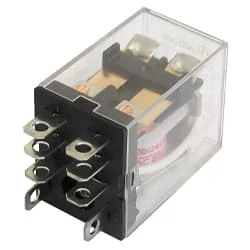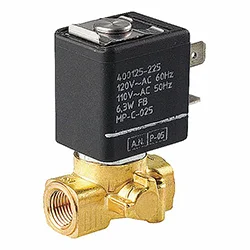Single Phase Pump motor wiring:
This diagram shows how to make single-phase pump motor wiring. In this circuit, we use a DP MCB ( Double Pole Minature Circuit Breaker ), an RCCB ( Residual Current Circuit Braker ), a relay, a magnetic contactor, a flowmeter, and an AC Solenoid. Here we need to connect all components like our diagram. Now it's ready to use.
Diagram of Single phase motor wiring:
Components Need for this Project:
You can get the components from any of the sites below:
- DP MCB [See Buy Click Amazon]
- RCCB [See Buy Click Amazon]
- Relay [See Buy Click Amazon]
- Contactor [See Buy Click Amazon]
- Flowmeter [See Buy Click Amazon]
- Ac Solenoid [See Buy Click Amazon]
Read Also:
Components used to make the single phase pump wiring:
01. DP MCB
 |
| Fig 2: DP MCB |
Double pole MCB can control two wires. This circuit breaker is generally used in single-phase electric lines. Double pole MCB circuit breaker input has two wires supply two wires and an output. In a single-phase line, A double-pole MCB circuit breaker is used to give good production. This circuit breaker is provided through phase and neutral circuit breaker, it is very safe. This circuit breaker is preferred for home appliances. A DP MCB usually trips for 2 reasons 1. Overload 2. Short circuit.
02. RCCB
 |
| Fig 3: RCCB |
The RCCB (Residual Current Circuit Breaker) or RCCB is an electrical protective device. A residual Current Circuit Breaker is specially designed to protect the electrical circuit against earth faults and humans from electrical shock. In this, under normal conditions the load is always connected between the phase terminal to the neutral terminal, hence the flow of the phase current is equal to the neutral current. Earth fault or fault in a power system can cause excess heating, more power consumption, burning or fire, etc. So, protection against earth leakage is very important.
03. Relay
 |
| Fig 4: Relay |
This relay is known as 8 pin relay because it has 8 terminals. When coil power is supplied. A magnetic induction is created due to which the connected sheet of the Com part moves towards the NO part changing to NO-NC. The former NC region loses conductivity and becomes NO. Thus, as long as power is supplied to the coil, the NO and NC positions will remain in the alternating state, and when the power is removed from the coil, it will return to its original position. This is basically how a relay switch works.
04. Contactor
 |
| Fig 5: Contactor |
A magnetic contactor is an electrical device used for load control, automation, and protection. It is much like a magnetic reel. However, relays are generally used for low power and voltage, on the other hand, when we think of high power, these heavy-duty contractors only come to mind. It basically works by switching the load on and off. It has 3 terminals whose inputs are denoted as L1, L2, L3, and outputs as T1, T2, and T3. The circuit of the load is made in automation mode or protection using auxiliary contacts. It has two types of terminals. 1) Normally Open (NO). 2) Normally Closed (NC)
05. Flowmeter
 |
| Fig 6: Flowmeter |
A flow meter is a flow rate measuring device used to determine the linear or nonlinear mass and volumetric flow of a liquid or water. The many names of flow meters include flow water, flow indicator, liquid meter, and flow rate sensor. which can be an open channel or closed conduit. An open channel is when the flow is open to the atmosphere. whereas a closed conduit is when the flow is in a tube or pipe.
06. Ac Solenoid
 |
| Fig 7: Ac Solenoid |
Ac Solenoid valves are the most important components used in Emergency off / on valves & other final control elements to control the process fluids & gases. Ac Solenoids are basically, elector mechanical devices that convert AC or DC electrical energy into linear motion.
Thank You for visiting the website. Keep visiting for more Updates.


Post a Comment
Do leave your comments